Welcome to Moda Fabrics!
Between the Layers
Between the Layers
So you’ve made your quilt top – it’s gorgeous! And you’ve got your backing all ready to go. So what are you going to put in the middle of your sandwich?
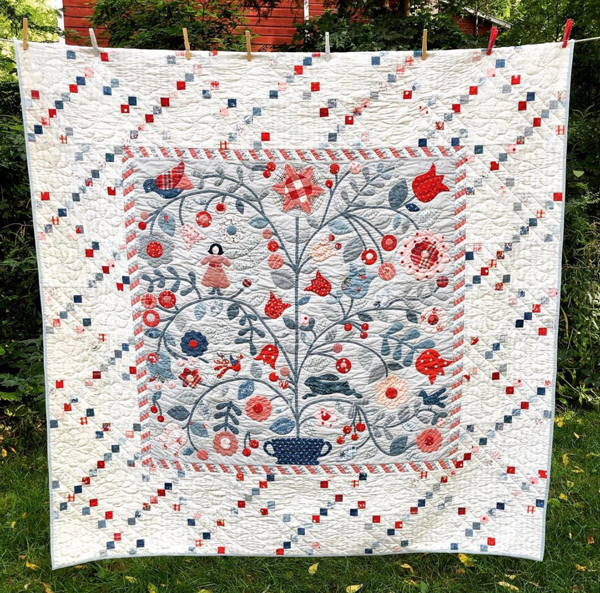
Hartfield by Laurie Simpson - hand-quilted.
We asked Moda’s designers about their batting preferences, and a few related questions.
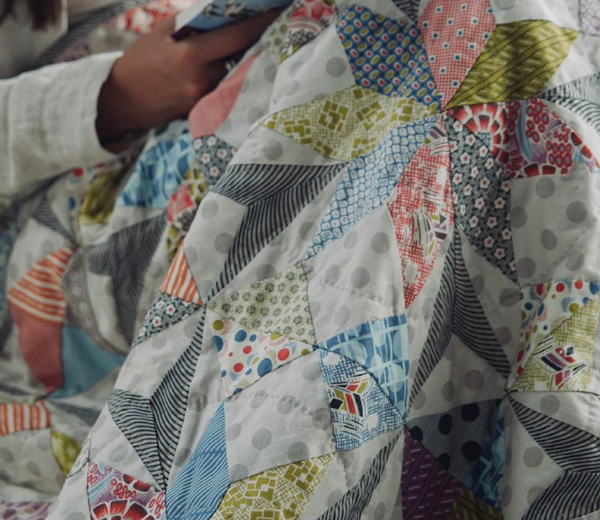
Winki Stars. This is one of the new quilts in Jen Kingwell's coming-in-July book, Quilt Recipes. This quilt was made with her Winkipop collection - it's in stores now.
This was our list of questions:
- What kind of batting do you use in your quilts?
- Do you use different battings for different projects?
- White or Natural?
- Do you hand-quilt? If so, do you use a different batting?
- Do you ever experiment with different types of batting – e.g., wool, silk, blends?
- Do you pre-soak your batting?
- Do you wash your finished quilts?
- Have you ever had any problems with battings, shrinkage or bearding?

The Raven by Alma Allen and Barb Adams for Blackbird Designs.
Alma Allen of Blackbird Designs
- We use 100% cotton battings for machine-quilted pieces, and while we don’t often hand-quilt, we use an 80/20 cotton/poly blend when we do. It’s just easier to get the needle through the three layers.
- I have experimented with other battings, including wool. I liked that, and it hand-quilted like a dream.
- Washing? After the quilting is done, we throw the quil in the washer to get it wet, usually just a fill-and-spin. We then throw it into the dryer. When we pull it out, the cotton batting has shrunk just enough to make the quilting prominent, and the quilt looks so much more textured and soft. The cotton batting makes all the difference!
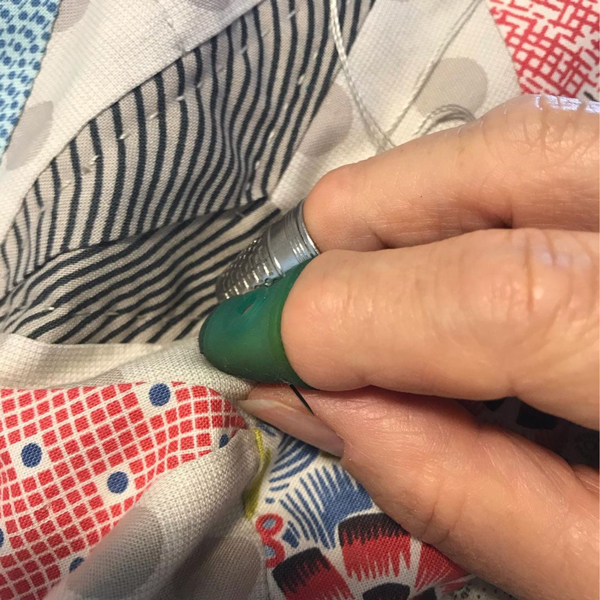
Jen Kingwell hand-quilting.
Jen Kingwell:
- Quilter’s Dream Request is my favorite, and I use it for everything.
- I only hand quilt, and the Cotton Request is the perfect batting for it as the needle glides through the batting like butter. (Jen also laughed when I asked about this.)
- Natural.
- I wash some finished quilts, and I like the little bit of shrinkage from cotton batting as it gives the quilts a vintage feel.
- I don’t care for bamboo battings for hand-quilting as it “pills” with handling.
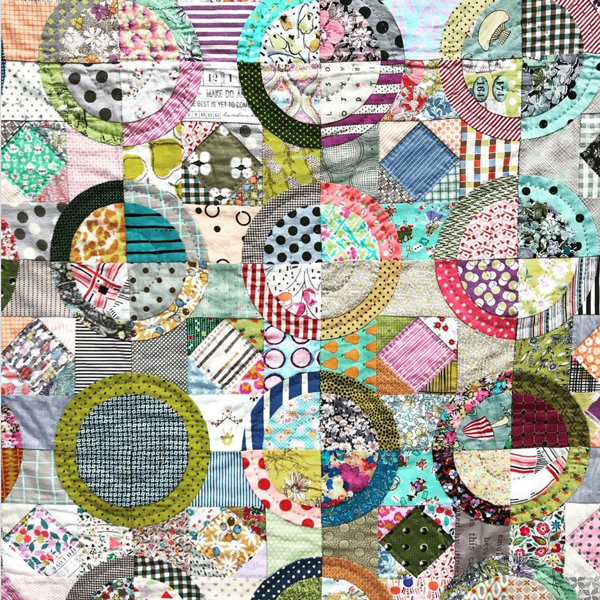
Jen's Halo quilt - hand-quilted - from the Jenny From One Block book.
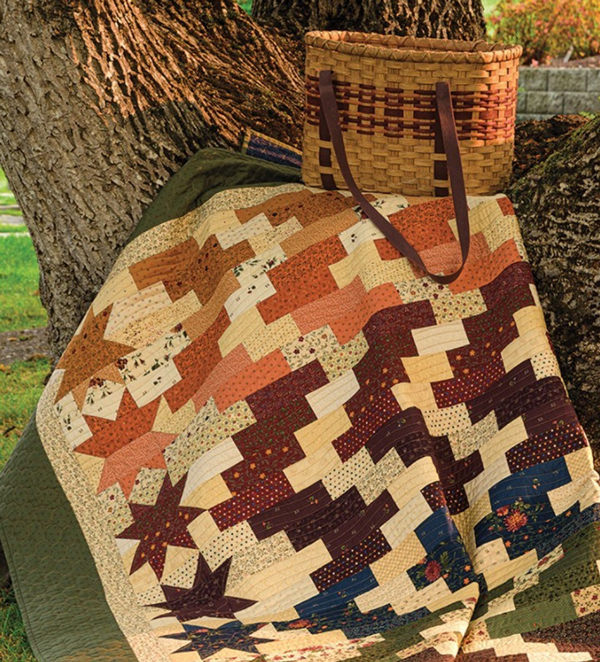
Stacked Stars by Lynne Hagmeier - from Moda All-Stars On A Roll Again.
Lynne Hagmeier of Kansas Troubles Quilts:
- I like cotton batting – Warm & Natural or Hobbs Organic are my favorites. I think they make my quilts softer and cuddlier.
- I use a lighter-weight cotton for a table-runner or wall quilt, and I’ll often substitute Moda Flannel for batting in a mini quilt. It’s easy for me to quilt, and it rolls, drapes and tucks into a basket well. I love using flannel in place of batting for pillows too.
- Natural. Always.
- My quilters and I have tried different blends but I keep going back to cotton batting because of the way it feels, and looks.
- Quilts that need to be photographed are not washed because the crisp finish of a new quilt is best for displays and pictures. But after some time, and quilts that we’re using, my quilts do get washed.
- When wool batting first came out many years ago, I had a quilt that bearded terribly. I haven’t had any problems since.
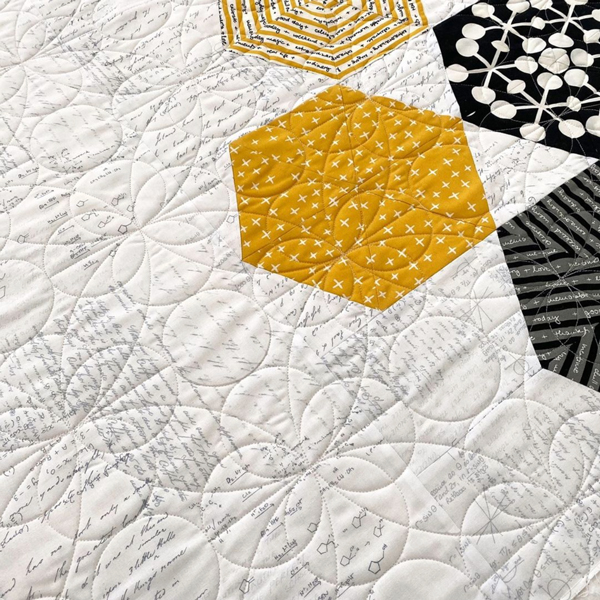
Brigitte's Spring In Paris quilt made with her Quotation collection.
Brigitte Heitland of Zen Chic:
- I use two different battings. For quilts that will hang, or that need to be flat, I use the 80/20 cotton-poly blend by Moda – it’s called Luna. This is also what I use for jackets and garments, pillows and zipper bags.
- For quilts that will be cuddled with, I use a higher-loft, fluffy, 100% polyester batting. It can be washed easily, and for snuggling in front of the television, it’s the softest.
- For table-runners, I use a very flat, low-loft cotton batting, or even just a piece of webbing-interfacing. I don’t want my tableware to be wobbly.
- I don’t hand-quilt. While I have taken it up many times, it takes a lot of training and practice to look the way I want it to, so I gave up on that.
- The poly batting is white, and the cotton/poly blend is natural. When I make a quilt with a dark background, I will use a dark batting, usually a polyester or poly-blend.
- I have tried wool and bamboo battings, and I liked both of them very much. But I don’t do a lot of machine-quilting in my home now so now the batting choice is often the one picked by my long-arm quilter.
- I rarely wash my sample quilts, but quilts that will be used are washed regularly. Since those quilts are made for beds, I don’t want them to shrink. So I pre-wash the batting – pre-soak – so that it shrinks before it is put into the quilt. It doesn’t have that antique, crinkly look.
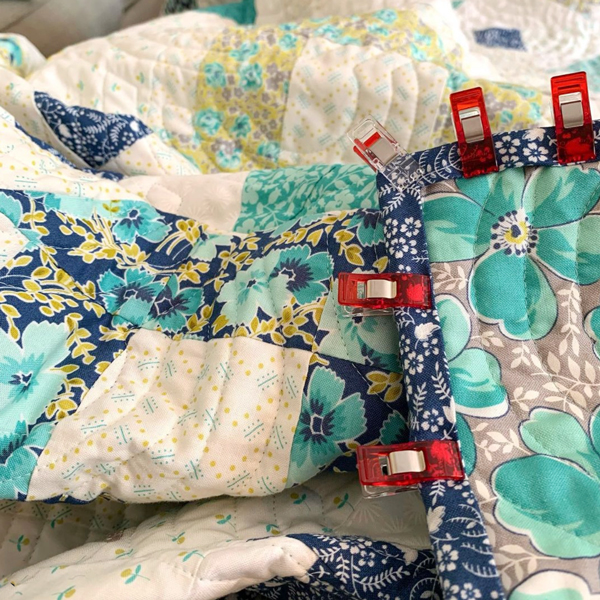
Linzee's binding a Flowers for Freya quilt - look at the drape with the wool batting!
Linzee McCray:
- I’m “team wool batting” all the way! I love that it’s lightweight, and it’s warm in the winter, and cool in the summer. It has a nice amount of “puff” without being overwhelming, and it crinkles a bit when washed. I don’t pre-wash it, and I’ve never had problems with excessive shrinking. I know many others love cotton batting, but I’ve had a few that were stiff, almost board-like, even after multiple washings. I’ve never had that with wool batting.
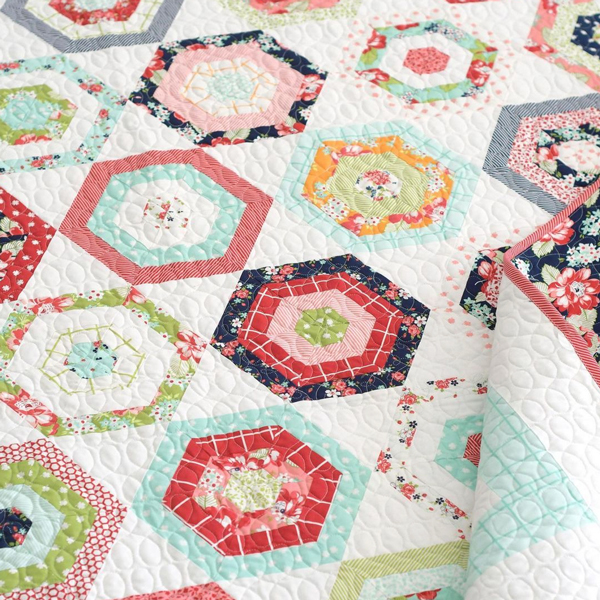
Lollipop is made with One Fine Day Honey Buns, and it is one of Camille's new patterns.
Camille Roskelley of Thimbleblossoms:
- Warm & White by Hobbs – I buy it by the roll! It’s just the right weight for the chilly desert climate of Las Vegas.
- Should I be pre-soaking my batting? (Laughs uproariously.)
- The quilts we use are washed regularly. I have three boys! Most of my work quilts and samples are unwashed, at least until they are retired and we start using them.
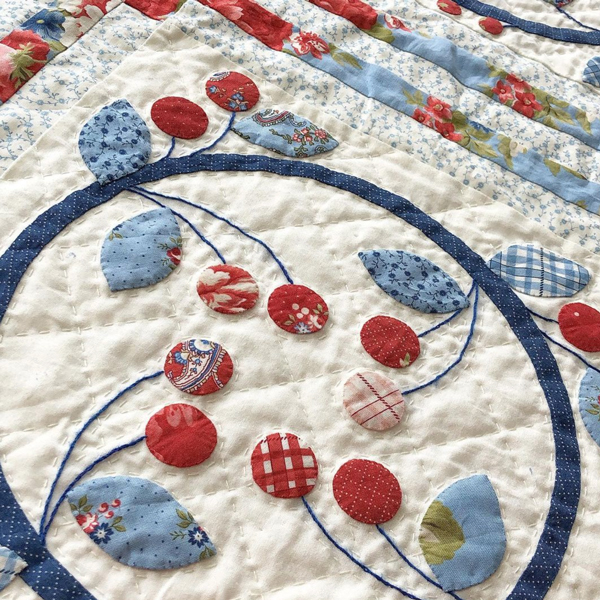
Cherry Wreath by Laurie... hand-quilting.
Laurie Simpson of Minick & Simpson:
- Hobbs Heirloom and Quilter’s Dream are my favorites for machine and hand-quilting.
- If I’m hand-quilting using a traditional stitch, I usually use Quilter’s Dream Request weight. But Hobbs Heirloom is also hand-quilted with ease.
- White and Natural, I use both.
- I have experimented with other battings, and I like using wool for some hand-quilted quilts. It’s easy to stitch, and more importantly, it gives great definition. I’ve used it for my whole cloth quilt, and the quilting absolutely pops out beautifully. Whatever you do, don’t use Warm & Natural for hand-quilting – your hands will thank you later.
- Pre-soaking batting? Right. (Laughs hysterically.)
- My only issues with bearding were with synthetic battings, and that’s probably why I haven’t used them in over forty years.

Sea Salt is a new quilt by Jenelle for her coming-soon Lakeside Toweling collection - the toweling quilts beautifully!
Jenelle Kent of Pieces to Treasure:
- I mostly use 100% cotton for my quilts, but I will use bamboo batting in quilts for babies and children as it is anti-fungal.
- For tablerunners, I use a low-loft, fusible fleece because it is stiffer, and lays really flat. It’s Pellon 630, but I think that’s the number of it in Australia. (In the US, it’s Pellon 987F.) I use this for pillows, or scraps of batting – whatever is handy.
- For hand-quilting, I use a wool batting because it is not as dense, and it needles easily. I also like wool-poly blends for hand-quilting.
- I use bleached white if my quilt has white fabrics in it, otherwise I use Natural.
- I don’t experiment as much as I used to, but I have tried many battings in the past.
- Washing quilts? Sample quilts are only washed if they get grubby, but quilts that are going to be used are washed regularly. And I haven’t had any problems with batting shrinking.
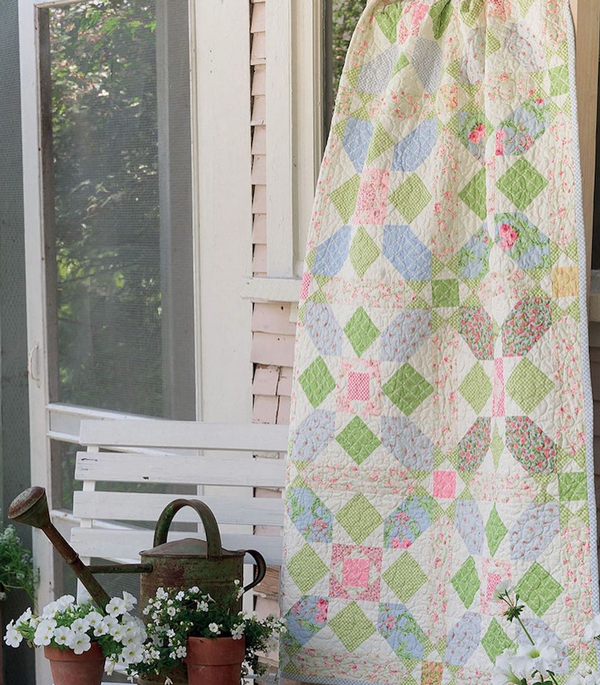
PuddinPie from Acorn Cottage by Brenda Riddle.
Brenda Riddle:
- Quilter’s Dream Request because it’s 100% cotton, and it’s the perfect weight for living in a warmer climate like southern Arizona.
- While my quilts use Request, those I make for seniors in “care homes” in Minnesota use Quilter’s Dream Select, a slightly heavier weight cotton batting.
- I love QD Request for hand-quilting.
- White and Natural, though with so many of my quilts having a lighter background, I buy the White Request batting by the case.
- I’d love to try wool and silk battings but haven’t yet – though they even sound wonderful!
- Pre-soaking? That’s a thing?
- I wash my quilts as soon as possible. I love the cozy look of a washed quilt, and one of my favorite parts of the process is pulling it out of the dryer that first time.
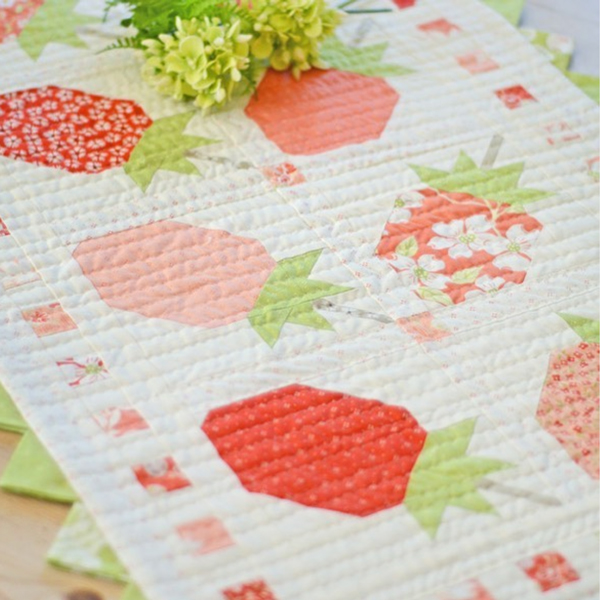
Joanna pieced and quilted this Berries runner with one Charm Pack of her in-stores-now Strawberries & Rhubarb collection.
Joanna Figueroa of Fig Tree & Co.:
- Moda Luna Cotton and Hobbs Tuscany, either a 100% Cotton or an 80/20 cotton/poly blend – for the flat, vintage look, and because the quilts “crinkle” after they’re washed.
- For tablerunners and pillows, I like Pellon Fusible Fleece because it’s fused to the project and the backing is spray basted to the back. How easy is that? (Always look for the F after the number - that means the fleece is fusible.)
- Mostly white. But if I need Natural for a specific finished look, I'll use that.
- Washing? Absolutely – unless it has a lot of applique, or will never be used on a bed.

Up Hill Down Dale by Janet Clare - this is made with her Flight Collection from a few years ago. (Love. This. Quilt.)
Janet Clare:
- I use a 70/30 blend of cotton and poly, and one that is 100% recycled materials. I use this wadding for everything. (Wadding – Brit-speak for batting. Aussie-speak too.)
- The wadding is off-white… I don’t know if it’s bleached.
- I have experimented with a bamboo wadding that was delicious.
- Work quilts don’t get washed, but the quilts we use do.
- Aren’t waddings supposed to shrink? That’s how they get that vintage look we love!
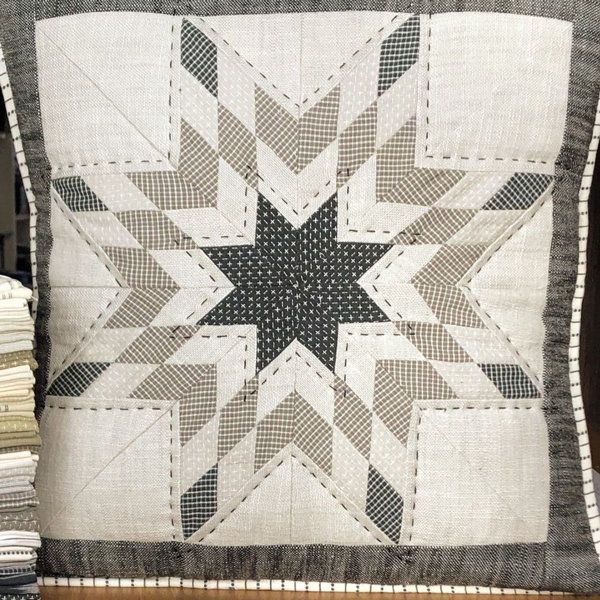
Corey Yoder hand-qulted this pillow made with Moda's Boro Wovens Foundations.
Corey Yoder:
- My only preference is a low-loft batting. Since I send out most of my quilts, I leave the batting choice up to the longarm quilter.
- If I am making something small that I’m going to quilt myself, I usually use the trimmings from my larger quilts. I just grab a piece that’s about the right size, and I really don’t worry too much about the content.
- I prefer to use the low-loft, poly/cotton blends when I hand quilt. I think the stitches show up better, and the needle glides through the layers.
- Both Natural and White.
- I like to experiment with small projects that I’m hand-quilting because the batting choice isn’t as imperative as it is for something larger.
- Quilts that are used get washed, but I also have a lot that have never been washed.
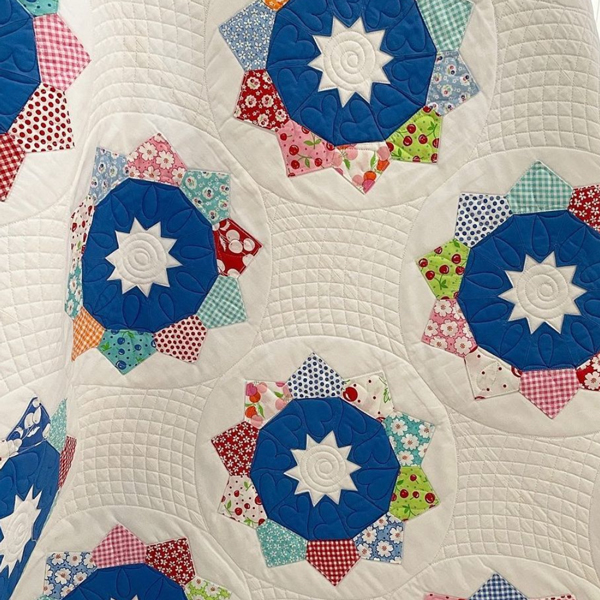
Beachballs by Me & My Sister Designs - Barbara. This quilt is in the Double-Wide Dresden book, and it's made with the DWD Ruler-Template.
Barbara Groves of Me & My Sister Designs:
- Quilter’s Dream 80/20 Cotton/poly – white. Always white because we use a lot of white and light backgrounds.
- I use this for everything because my quilter likes it, and I was once told it had a “good drape” for photography. (I also like how it feels.)
- Hand quilt? And no, I don’t experiment with battings either. I get what my quilters like – I send everything out for professional quilting. I quilted one quilt and I didn’t like any part of it. I like piecing tops!
- I wash quilts that I am going to use, but quilts made for samples are washed as needed.
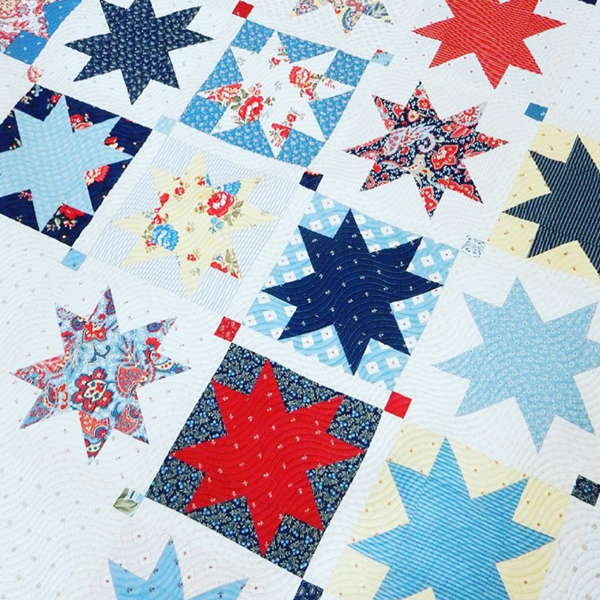
Sherri's Hometown Stars Layer Cake quilt - it's a pattern.
Sherri McConnell of A Quilting Life:
- Warm & White, and I use this for wall-hangings, runners, bags and pillows. My quilter will sometimes add a layer of wool batting for a special quilt that is getting custom quilting.
- White batting works best for me, as I never have to worry about the batting showing through.
- I’ve experimented with a different types of batting but I keep coming back to the Warm & White cotton batting.
- I wash quilts that will be used but those that are primarily for display usually don’t get washed.
I know that was a lot, but I hope you picked up a few tips, and got a few ideas.
I am happy that at least one of the designers knew what I meant about pre-soaking binding! (It was "a thing" way-back-when... I did it once.)
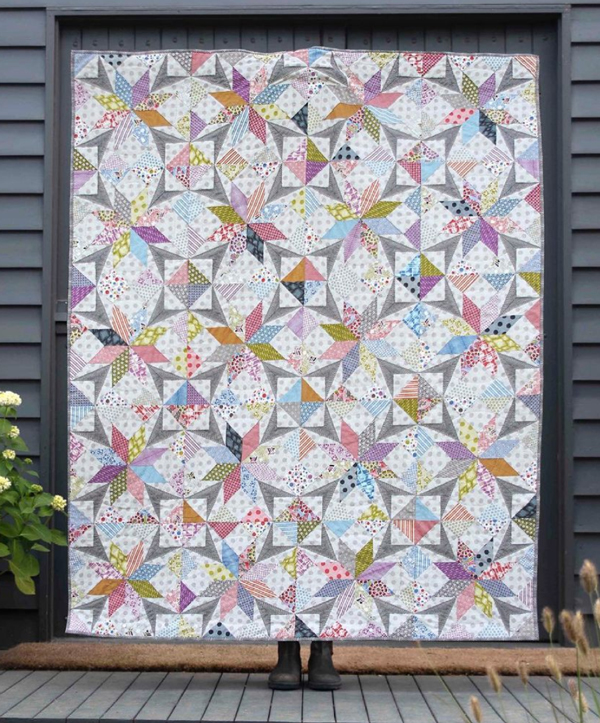
One more look at Jen's Winki Stars. Because I love this quilt and am excited to see her Quilt Recipes book.
Have a good weekend - I hope you're finishing a quilt top!
